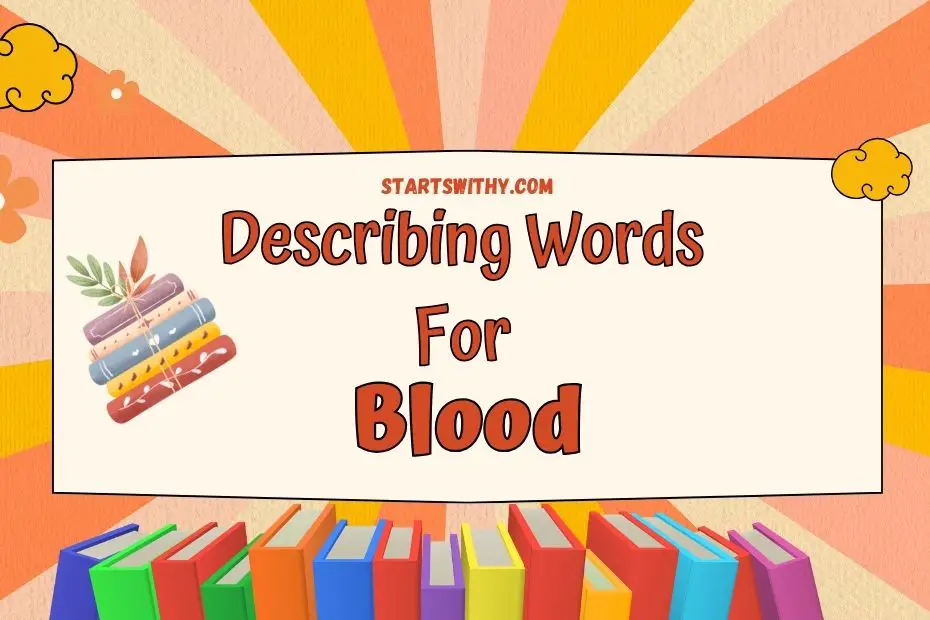Are you a foodie who loves exploring new flavors and tastes? If so, you’ve come to the right place! In this article, I’ll be diving into the world of adjectives for taste, providing you with a comprehensive list of descriptive words to enhance your culinary vocabulary. Whether you’re describing a delectable dessert, a savory dish, or a refreshing beverage, having a wide range of adjectives at your disposal will help you express your taste experiences with precision and flair.
How to Describe taste? – Different Scenarios
When it comes to describing taste, there are a variety of scenarios that can arise. Whether you’re exploring a new dish, critiquing a restaurant, or simply trying to articulate your own preferences, having a range of adjectives at your disposal is key. Let’s explore a few different scenarios and some descriptive words that can help you accurately describe taste experiences.
1. Exploring New Flavors
When you’re trying new foods, it’s important to be able to express your impressions accurately. Here are some adjectives that can help describe taste in this scenario:
- Savory: Rich, full-bodied, and satisfying.
- Sweet: Delightfully sugary, like honey or fresh fruit.
- Spicy: Adding a fiery kick to your taste buds.
- Sour: Tart, tangy, and mouth-puckering.
- Bitter: A sharp, strong taste that can be acquired or pleasant.
2. Critiquing a Restaurant
If you’re reviewing a restaurant or discussing a specific dish, being able to provide detailed descriptions is essential. Here are some adjectives that can help you critique taste in this scenario:
- Flavorful: Bursting with a balanced combination of tastes.
- Tender: Easily cut or chewed, with a melt-in-your-mouth quality.
- Juicy: Succulent and moist, with flavors that are rich and satisfying.
- Zesty: Bright and lively, adding a refreshing pop to the taste.
3. Expressing Personal Preferences
Being able to articulate your own taste preferences can help others understand your culinary choices. Here are some adjectives that can help you describe your personal taste preferences:
- Rich: Indulgent and deeply satisfying.
- Fresh: Crisp, bright, and invigorating.
- Mild: Gentle and subtle, without overpowering flavors.
- Complex: Intricate and layered, with a variety of flavors that unfold.
Remember, the more descriptive your words are, the more accurately you can convey your taste experiences. So don’t be afraid to explore new adjectives and expand your culinary vocabulary. Happy tasting!
Describing Words for taste in English
When it comes to describing taste experiences, having a wide range of adjectives at your disposal is crucial. It allows you to accurately convey the flavors and sensations you encounter. In this section, I’ll share some common describing words for taste in English that you can use to enhance your ability to express your taste experiences.
1. Sweet – Sweet flavors are often associated with sugary treats and fruits. They can be described as pleasant, sugary, or even syrupy. For example, “The cake had a delightful sweetness to it.”
2. Sour – Sour taste experiences tend to make your mouth pucker. Use words like tangy, tart, or acidic to describe these flavors. For example, “The lemonade had a refreshing sourness that made my lips tingle.”
3. Bitter – Bitterness is often found in foods like coffee, dark chocolate, or certain leafy greens. It can be described as strong, intense, or even slightly unpleasant. For example, “The espresso had a robust, bitter flavor that lingers on the palate.”
4. Salty – Salty foods are characterized by their high sodium content. Describing them as savory, briny, or even salty-sweet can help convey their taste. For example, “The popcorn had a perfect balance of saltiness and butteriness.”
5. Spicy – Spicy flavors are often associated with heat and a tingling sensation. Use words like fiery, zesty, or even mouth-numbing to describe these tastes. For example, “The chili had a spicy kick that left my tongue tingling.”
6. Savory – Savory flavors are rich, hearty, and often associated with umami. Use words like meaty, satisfying, or even robust to describe these tastes. For example, “The steak had a savory flavor that melted in my mouth.”
Remember, the more descriptive your words are, the more accurately you can convey your taste experiences. Experiment with these describing words for taste and let your taste buds guide you in finding the perfect words to express your culinary adventures.
Keep reading to discover more adjectives to describe taste in different scenarios and learn how they can enhance your ability to critique restaurants, explore new flavors, and express personal preferences.
Adjectives for taste
When it comes to describing taste experiences, having a wide range of adjectives at your disposal can greatly enhance your ability to express your culinary adventures. Let’s explore some positive and negative adjectives that can help you articulate different tastes with ease.
Positive Adjectives for Taste
Positive adjectives allow us to capture the delightful and satisfying aspects of various taste experiences. Here are twelve examples of positive adjectives for taste along with example sentences to help you understand their usage:
| Adjective | Definition | Example Sentence |
|---|---|---|
| Sweet | Having a pleasant, sugary taste | This cake is so sweet, just like a piece of heaven! |
| Refreshing | Giving a pleasant feeling of revitalization | The cold watermelon on a hot summer day is so refreshing. |
| Savory | Having a delicious, full-flavored taste | The roasted garlic adds a savory twist to the dish. |
| Tangy | Having a sharp, acidic taste that adds a zing | The lemonade has a tangy flavor that makes it so refreshing. |
| Spicy | Having a pungent and hot taste | The curry is deliciously spicy, leaving a pleasant burn on the tongue. |
| Zesty | Having a lively, invigorating taste | The salsa has a zesty kick that wakes up the taste buds. |
| Juicy | Having a succulent and flavorful taste | The watermelon is so juicy, it bursts with flavor in every bite. |
| Creamy | Having a smooth and rich texture that coats the mouth | The mashed potatoes are wonderfully creamy and melt in your mouth. |
| Flavorsome | Having a delicious and flavorful taste | The homemade lasagna is incredibly flavorsome. |
| Aromatic | Having a pleasant and distinctive smell that enhances the taste | The freshly brewed coffee is aromatic and invigorating. |
| Heavenly | Having a taste that is so delightful and exquisite | The chocolate mousse is simply heavenly. |
| Delectable | Having a taste that is highly pleasing and enjoyable | These freshly baked cookies are absolutely delectable. |
Negative Adjectives for Taste
Negative adjectives help us describe taste experiences that may not be enjoyable or appetizing. Here are five examples of negative adjectives for taste, along with example sentences:
| Adjective | Definition | Example Sentence |
|---|---|---|
| Bitter | Having a harsh or unpleasant taste | The black coffee tastes bitter without any sweetener. |
| Sour | Having an acidic or tart taste | The lemon is sour and makes my face scrunch up. |
| Salty | Having an excessive amount of salt | The soup is too salty and needs more seasoning. |
| Metallic | Having a taste reminiscent of metal | The canned beans have a metallic aftertaste. |
| Rancid | Having a spoiled or unpleasant taste due to decomposition | The milk smells and tastes rancid; it’s gone bad. |
Having a wide range of adjectives at your disposal can help you express your taste experiences more accurately. Whether it’s describing the delightful flavors or the less enjoyable ones, these adjectives will enable you to communicate your culinary adventures with precision and clarity.
Synonyms and Antonyms with Example Sentences
I want to provide you with a comprehensive list of synonyms and antonyms for describing taste sensations. This will not only enhance your ability to express your culinary adventures with precision and clarity but also expand your vocabulary. Let’s explore some synonyms and antonyms for taste, along with example sentences to illustrate their usage.
Synonyms for Taste
When it comes to describing taste, there are various synonyms that can help you articulate the different flavors and sensations. Here are some synonyms for taste:
- Savory: The savory flavor of the steak made my taste buds dance with delight.
- Delectable: The delectable chocolate cake melted in my mouth.
- Zesty: The zesty lemonade was a refreshing tangy sensation.
- Succulent: The succulent watermelon was juicy and sweet.
- Scrumptious: The scrumptious pasta dish left me wanting more.
Table: Synonyms for taste
Synonyms
- Savory
- Delectable
- Zesty
- Succulent
- Scrumptious
Antonyms for Taste
Just like there are synonyms for taste, there are also antonyms that can help you describe flavors that are less desirable or unpleasant. Let’s take a look at some antonyms for taste:
- Bland: The dish lacked flavor and was quite bland.
- Rancid: The milk had a rancid taste and was no longer suitable for consumption.
- Bitter: The bitter taste of the medicine made it difficult to swallow.
- Sour: The sour grapes made my face pucker up.
- Unappetizing: The unappetizing color and taste of the soup made me lose my appetite.
Table: Antonyms for taste
Antonyms
- Bland
- Rancid
- Bitter
- Sour
- Unappetizing
By utilizing this diverse range of synonyms and antonyms for taste, you can beautifully describe various flavor sensations. Whether it’s a delectable dessert or a bitter herbal tea, these words will not only enhance your communication but also engage your readers in your culinary adventures.
Conclusion
Expanding my vocabulary with a variety of adjectives to describe taste has been an invaluable tool in my culinary adventures. The comprehensive list of synonyms and antonyms for taste, along with their accompanying example sentences, has allowed me to express my taste experiences with precision and clarity.
By incorporating these descriptive words into my conversations and writing, I have been able to convey the subtle nuances of flavors and textures that I encounter. Whether I’m savoring a delectable dish or critiquing a culinary creation, having a wide range of adjectives at my disposal has elevated my ability to communicate my taste experiences.
Not only have these adjectives enhanced my ability to describe taste, but they have also expanded my vocabulary. Exploring new words and their meanings has been an enriching experience, and I find myself constantly seeking out new ways to express my culinary encounters.
Incorporating a diverse range of adjectives into my culinary vocabulary has allowed me to elevate my taste experiences and expand my linguistic repertoire. So, the next time you savor a delicious meal, don’t just say it’s “good” or “bad” – let your taste buds guide you to a world of descriptive possibilities.



